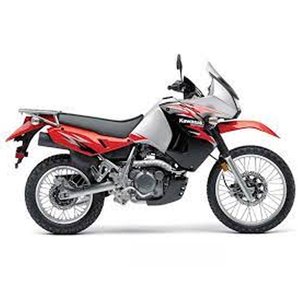Kawasaki KLR 650 (2008–2018) Review: The Swiss Army Knife of Dual-Sport Motorcycles

The Kawasaki KLR 650 is more than a motorcycle—it’s a cult. For over a decade (2008–2018), this unassuming thumper reigned as the go-to machine for riders who demanded a bike that could tackle highways, backroads, and everything in between without breaking a sweat—or the bank. We’ve spent days in the saddle of this legend, from asphalt ribbons to gravel trails, and here’s why it remains one of the most beloved adventure platforms ever built.
Design & Build: Function Over Flash
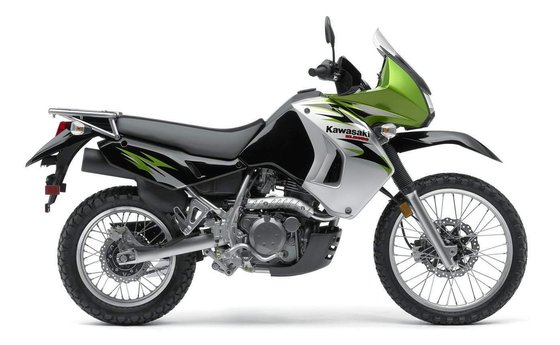
The Anatomy of a Workhorse
Clocking in at 196 kg (432 lbs) wet, the KLR 650 isn’t winning any weight-loss contests. But this heft translates to stability, with a semi-double cradle steel frame that’s survived everything from Mongolian steppes to Starbucks parking lots. The 2008 redesign introduced sharper bodywork with a taller windscreen and 23L (6.1-gallon) fuel tank that doubles as a wind deflector. While the Matrix Camo Gray (2016+) added flair, this is a bike that wears its scratches like badges of honor.
Ergonomics That Make Sense
At 889mm (35"), the seat height intimidates shorter riders, but the narrow front profile lets you paddle through mud like a duck. The real magic happens once moving—the 28° rake and 1,481mm (58.3") wheelbase create stability that laughs at crosswinds. Kawasaki’s 2014 seat redesign added dimpled urethane foam, transforming the plank-like perch into something you could actually ride from Dallas to Denver.
Engine & Performance: The Heart of a Tractor
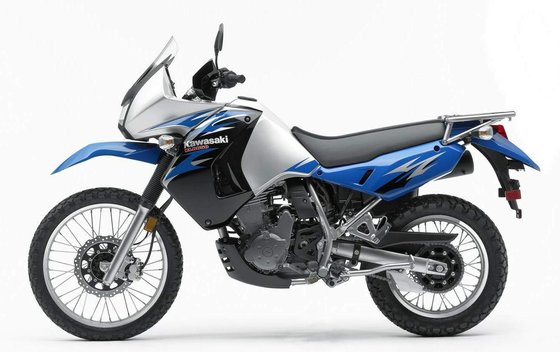
Specs That Tell Half the Story
The 651cc liquid-cooled single isn’t about numbers—42 HP @ 7,000 RPM and 47 Nm torque (34.6 lb-ft) sound underwhelming until you’re climbing a 15% grade with luggage. The Keihin CVK40 carburetor (yes, carburetor) is stone-age simple, sucking fuel even at 45° angles. Liquid cooling keeps temps steady whether you’re idling in Death Valley or bombing through British Columbia.
The Riding Experience
Twist the throttle, and the engine builds power like a steam locomotive—slow but unstoppable. The 5-speed transmission’s ratios are spaced for survival, not sport:
- 1st gear: Crawling over boulders (2.266:1)
- 5th gear: Humming at 4,500 RPM @ 100 km/h (62 mph)
Vibration? Oh yes. At 110 km/h (68 mph), the mirrors blur into abstract art. But that’s part of the charm—this isn’t a bike you ride; it’s a bike you partner with.
On-Road Manners: Surprisingly Civilized
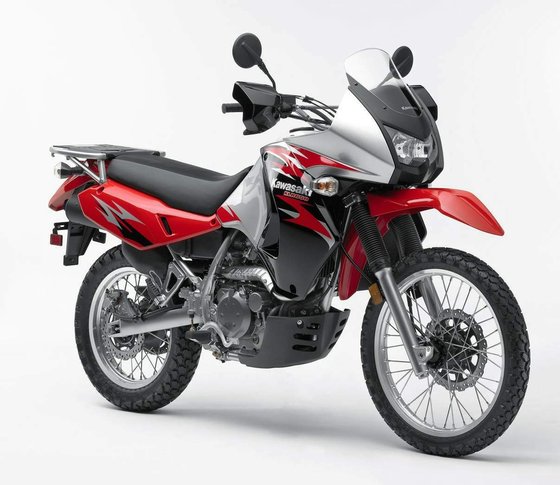
Highway Heroics
With 201mm (7.9") of front suspension travel and preload-adjustable rear shocks, the KLR soaks up potholes like a Barcalounger. The 41mm forks (upgraded from 38mm in 2008) resist dive under braking, while the 280mm petal disc front brake (up from 260mm pre-2008) provides enough bite to halt 432 lbs without drama.
Cornering Confidence
The 90/90-21 front tire turns in eagerly, though the chassis’ high COG reminds you to respect physics. On twisty tarmac, scraping pegs becomes a game—the metallic screech your reward for pushing limits.
Off-Road Prowess: More Capable Than You’d Think
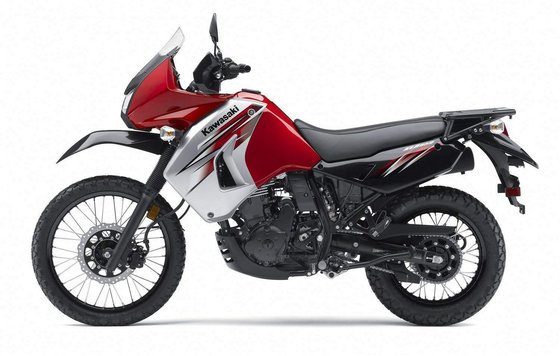
Dirt DNA
That 211mm (8.3") ground clearance isn’t just for show. With the suspension in its element, the KLR floats over washboards and skips through ruts. The 21”/17” spoked wheels (with thicker 4mm spokes post-2008) survive rock gardens, though the stock Dunlop K750 tires beg for replacement on serious trails.
Limits of a Gentle Giant
At 432 lbs, this isn’t a dirt bike. Technical single-track becomes a wrestling match, but fire roads and river crossings? The KLR devours them. Pro tip: Install crash bars—this bike spends as much time on its side as a college freshman.
Touring & Comfort: Eat Miles, Not Budgets
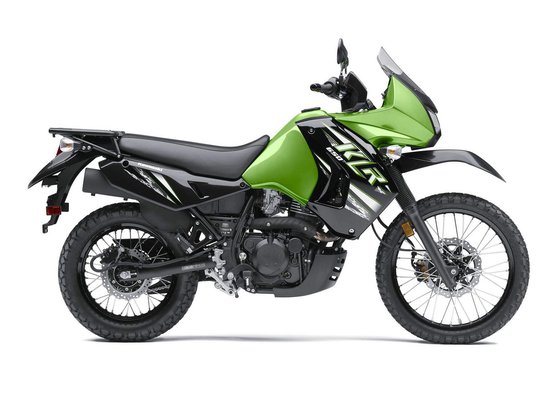
The Long Haul
Kawasaki nailed the touring essentials:
- 6.1-gallon tank = 400+ km (250+ mi) range
- 36W alternator powers heated gear and aux lights
- Subframe rack holds 2,267g (5 lbs) of luggage (or a small alpaca)
The 2014+ “New Edition” added a multi-contour seat and thicker wind protection. At 110 km/h (68 mph), you’re in a calm bubble—until a semi-truck passes and reminds you physics always wins.
Competition: KLR vs. The World
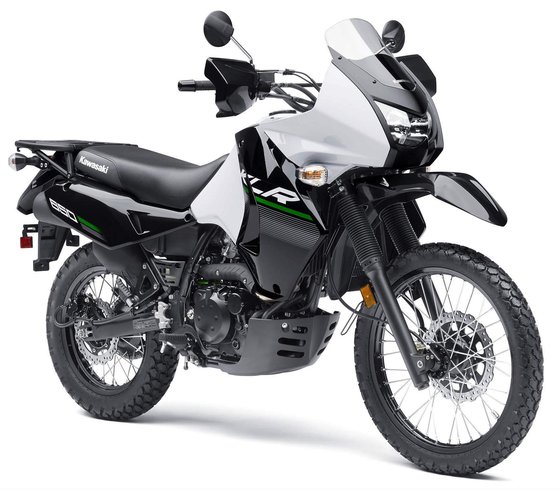
The Dual-Sport Heavyweights
- Suzuki DR650S: Lighter (166 kg/366 lbs) and peppier, but lacks wind protection and the KLR’s cult following.
- Honda XR650L: Air-cooled simplicity, but feels agricultural on pavement.
- BMW G650GS: Fuel-injected and refined, but costs 50% more.
The KLR’s genius? Balancing 80% road comfort with 20% off-road capability at a price that lets you spend savings on upgrades. It’s the Toyota Tacoma of motorcycles—overbuilt, understyled, eternally relevant.
Maintenance: Keep It Simple, Stupid

The KLR Owner’s Ritual
1. Oil Changes: Every 5,000 km (3,100 mi) with 10W-40. Window on the crankcase lets you check levels mid-ride.
2. Chain Care: O-ring chain lasts 20,000+ km (12,400+ mi) with regular lubing.
3. The “Doohickey”: The balancer chain tensioner (upgraded post-2008) should be replaced with an aftermarket kit—a rite of passage.
Common Upgrades
- Air Filter: Swap the stock unit for a Twin Air filter.
- Pegs: Wider aftermarket pegs save boots on long rides.
- LED Lights: The stock headlight’s glow is more “romantic candle” than “functional.”
Parts are cheap, forums are plentiful, and every repair can be done trailside with a Leatherman. This is a bike that teaches you mechanics through gentle encouragement.
Conclusion: The Last True Adventure Bargain
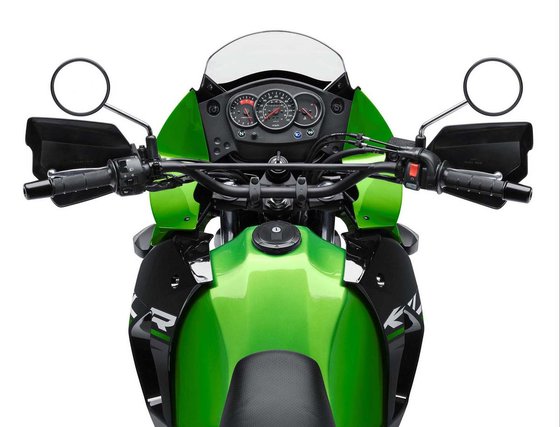
The KLR 650 isn’t the best at anything—except being indispensable. It’s the motorcycle equivalent of duct tape: not pretty, but it’ll hold your world together. From daily commutes to transcontinental expeditions, this bike asks only for gas and occasional oil.
In an era of 200HP superbikes and $30K adventure rigs, the KLR remains gloriously analog. It’s a reminder that adventure isn’t about specs—it’s about going. And with millions of aftermarket parts at MOTOPARTS.store, your KLR can evolve as your ambitions grow.
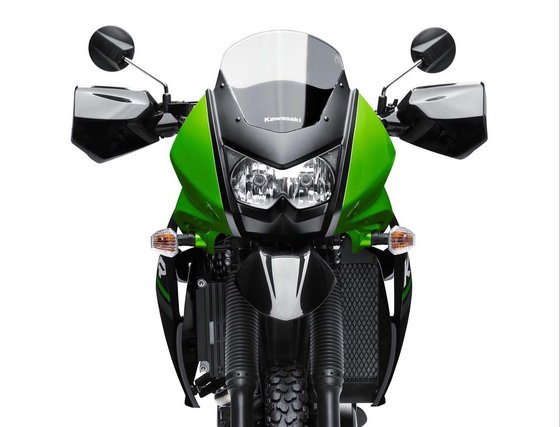
Final Verdict: The Swiss Army knife of motorcycles. Loses a blade occasionally, but always gets the job done.











Specifications sheet
| Engine | |
|---|---|
| Stroke: | Four-stroke |
| Max power: | 31 kW | 42.0 hp |
| Max torque: | 47 Nm |
| Fuel system: | Carburettor, Keihin CVK40 |
| Max power @: | 7000 rpm |
| Displacement: | 651 ccm |
| Max torque @: | 5000 rpm |
| Bore x stroke: | 100.0 x 83.0 mm (3.9 x 3.3 in) |
| Configuration: | Single |
| Cooling system: | Liquid |
| Compression ratio: | 9.8:1 |
| Number of cylinders: | 1 |
| Valves per cylinder: | 4 |
| Dimensions | |
|---|---|
| Wheelbase: | 1480 mm (58.3 in) |
| Dry weight: | 176 |
| Wet weight: | 194 |
| Seat height: | 889 mm (35.0 in) |
| Overall width: | 960 mm (37.8 in) |
| Overall height: | 1350 mm (53.1 in) |
| Overall length: | 2295 mm (90.4 in) |
| Ground clearance: | 211 mm (8.3 in) |
| Fuel tank capacity: | 23 L (6.1 US gal) |
| Drivetrain | |
|---|---|
| Chain size: | 520 |
| Chain links: | 106 |
| Final drive: | chain |
| Gear ratios: | ['1st 2.266', '2nd 1.444', '3rd 1.136', '4th 0.954', '5th 0.791'] |
| Transmission: | 5-speed, cable-operated wet clutch |
| Rear sprocket: | 43 |
| Front sprocket: | 15 |
| Final reduction ratio: | 2.867 (43/15) |
| Primary reduction ratio: | 2.272 (75/33) |
| Maintenance | |
|---|---|
| Engine oil: | 10W40 |
| Brake fluid: | DOT 4 |
| Spark plugs: | NGK CR8E or DPR8EA-9 |
| Spark plug gap: | 0.8 |
| Coolant capacity: | 1.9 |
| Forks oil capacity: | 1.2 |
| Engine oil capacity: | 2.7 |
| Tire pressure (rear): | 2.0 bar (29 psi) solo / 2.5 bar (36 psi) with passenger |
| Tire pressure (front): | 1.5 bar (22 psi) |
| Engine oil change interval: | Every 5000 km or 2 years |
| Valve clearance (intake, cold): | 0.10–0.20 mm |
| Valve clearance check interval: | 24,000 km (15,000 mi) |
| Valve clearance (exhaust, cold): | 0.20–0.30 mm |
| Additional Features | |
|---|---|
| Warranty: | 12 months limited |
| ABS availability: | Not equipped (standard models) |
| Fuel consumption: | 4.7 L/100 km (50 mpg) |
| Alternator output: | 36W |
| Chassis and Suspension | |
|---|---|
| Rake: | 28.0° |
| Frame: | Semi-double cradle, high-tensile steel |
| Trail: | 112 mm (4.4 in) |
| Rear tire: | 130/80-17 |
| Front tire: | 90/90-21 |
| Rear brakes: | Single 240 mm petal disc, 1-piston caliper |
| Front brakes: | Single 280 mm petal disc, 2-piston caliper |
| Rear suspension: | Uni-Trak linkage monoshock, 185 mm (7.3 in) travel, 5-way preload adjustable |
| Front suspension: | 41mm telescopic fork, 200 mm (7.9 in) travel |



